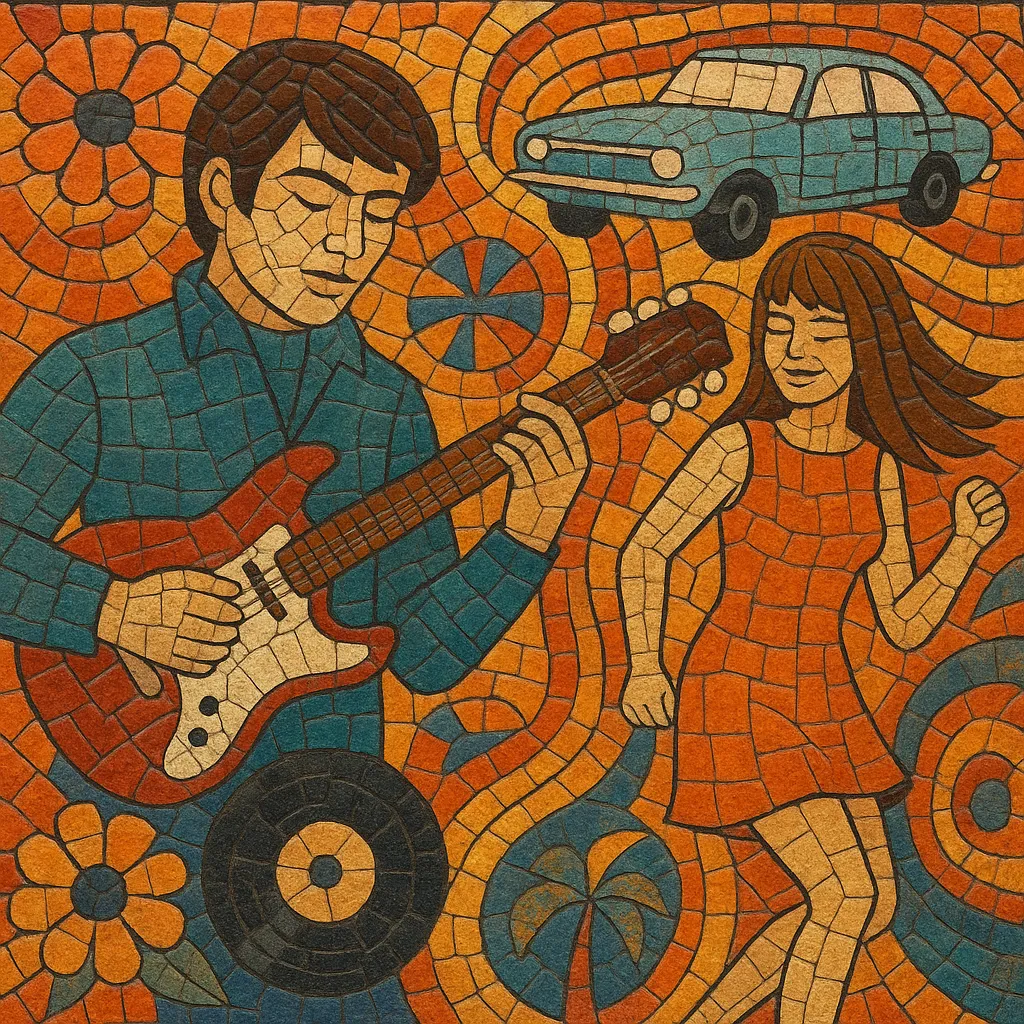Jovem Guarda is a Brazilian youth-oriented pop-rock movement that emerged in the mid-1960s, popularized by the TV program of the same name hosted by Roberto Carlos, Erasmo Carlos, and Wanderléa. Musically, it blends early rock and roll, Merseybeat, surf rock, yé-yé, and teen pop sensibilities with Portuguese lyrics and catchy, danceable rhythms.
Often called iê‑iê‑iê in Brazil (a play on the Beatles’ “yeah‑yeah‑yeah”), the style is marked by simple, major‑key melodies, jangly and twangy electric guitars, handclaps, driving backbeats, and themes about love, fashion, cars, and youth culture. It helped normalize electric instruments and a pop‑rock aesthetic in Brazilian mainstream media during the 1960s.
Jovem Guarda took shape in Brazil as rock and roll and the British Invasion spread worldwide. Brazilian youths embraced Merseybeat and surf rock, adapting these sounds to local tastes, language, and media. The term iê‑iê‑iê became shorthand for this homegrown take on beat music.
The TV show “Jovem Guarda,” launched in 1965 and fronted by Roberto Carlos, Erasmo Carlos, and Wanderléa, turned the style into a national phenomenon. Weekly broadcasts showcased bands, fashions, slang, and an upbeat image of modern youth, helping the music reach mass audiences and legitimize electric guitars on Brazilian television.
Songs typically used verse‑chorus forms, bright major keys, and straightforward I–IV–V progressions, with clean or lightly overdriven guitars, combo organs, and tight vocal harmonies. Lyrics centered on romance and teen life, delivered with an irreverent but wholesome charm that resonated with a broad audience.
By the late 1960s, Jovem Guarda’s initial wave ebbed as Tropicália and MPB rose with more experimental and politically engaged approaches. Many Jovem Guarda artists pivoted toward romantic pop. Nonetheless, the movement left a durable legacy: it mainstreamed rock instrumentation in Brazil, seeded future Brazilian rock and pop scenes, and influenced later styles ranging from Tropicália’s electric palette to subsequent pop‑rock and teen pop generations.
Use a classic 1960s pop‑rock combo: two electric guitars (one rhythm, one lead), electric bass, drum kit with a crisp backbeat, and optional combo organ (e.g., Farfisa) or light sax/strings. Favor clean or lightly overdriven guitar tones with spring reverb and occasional tremolo.
Keep harmonies simple and catchy. Major keys and I–IV–V (and V–IV turnarounds) dominate, with occasional IVmaj7 or ii–V pre‑chorus moves. Melodies should be singable, often pentatonic‑leaning, with memorable hooks and call‑and‑response backing vocals.
Aim for danceable mid‑to‑up‑tempo grooves (roughly 120–160 BPM) with an emphatic 2‑and‑4 backbeat, handclaps, and occasional surf‑style drum fills. Use compact song forms: intro–verse–chorus–verse–chorus–bridge–chorus, keeping tracks around 2–3 minutes.
Write in Portuguese with clear diction and relatable teen‑pop themes: first love, fun, cars, friendship, and fashion. Maintain an upbeat, romantic, and playful tone. Lead vocals are clean and upfront; add tight harmonies or unison shouts in choruses.
Emulate 1960s production: modest compression, tape‑like saturation, mono or narrow stereo imaging, and plate/spring reverb. Keep arrangements uncluttered so hooks and vocals remain the focus.


